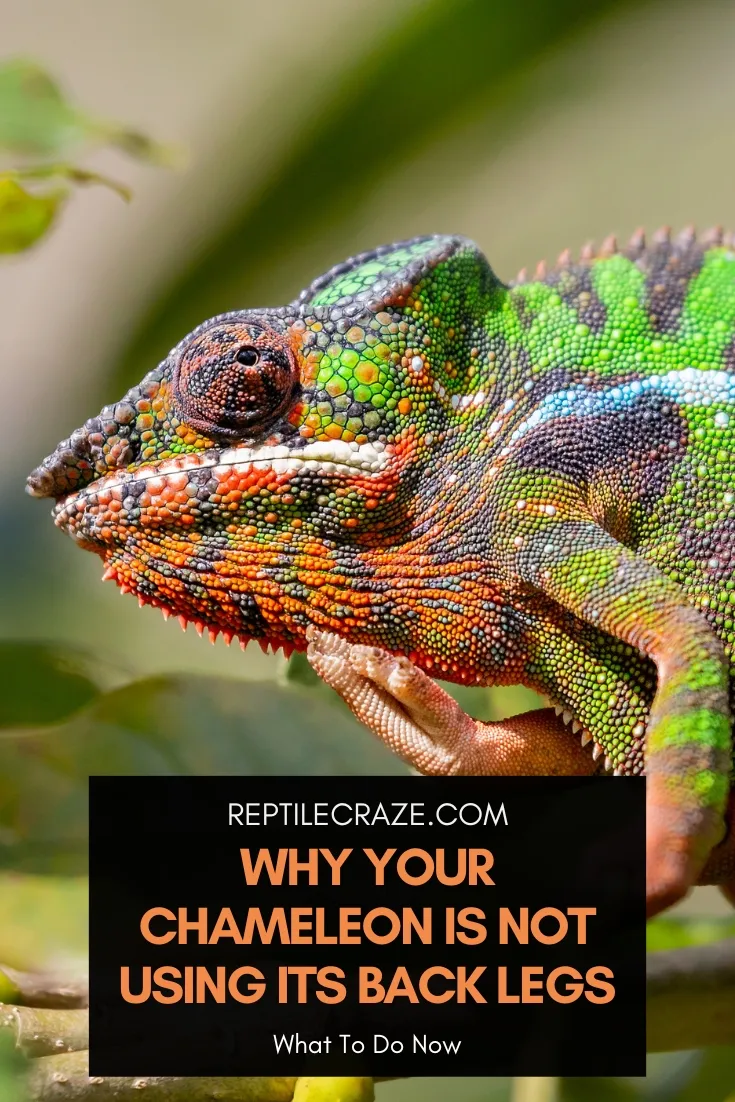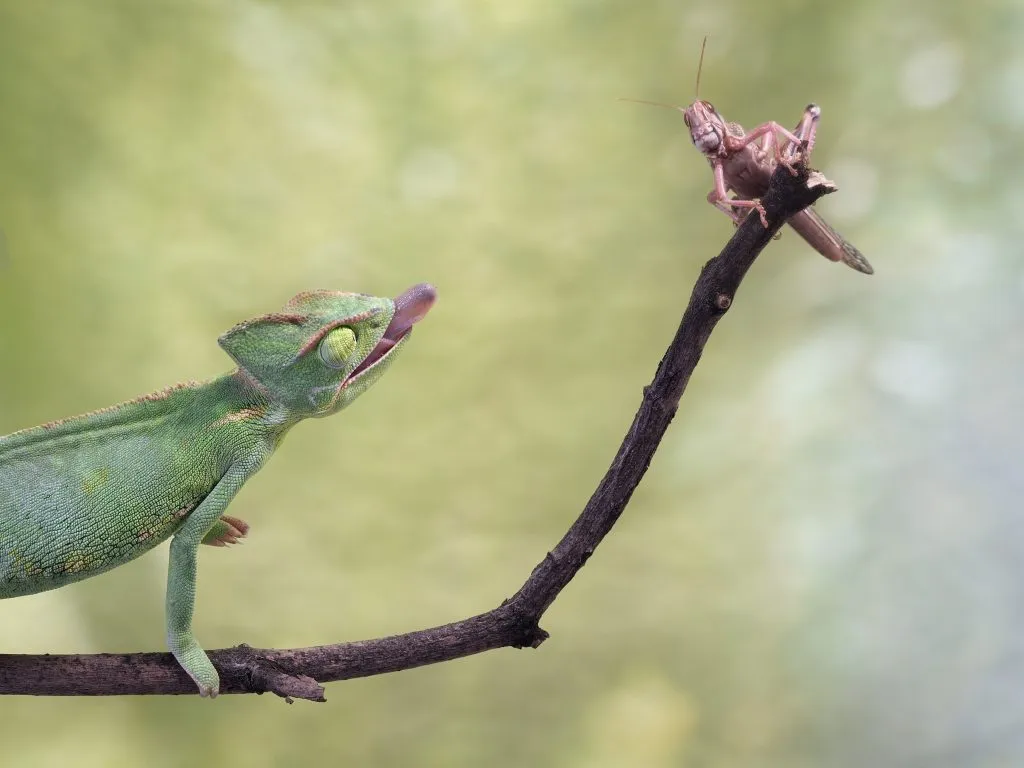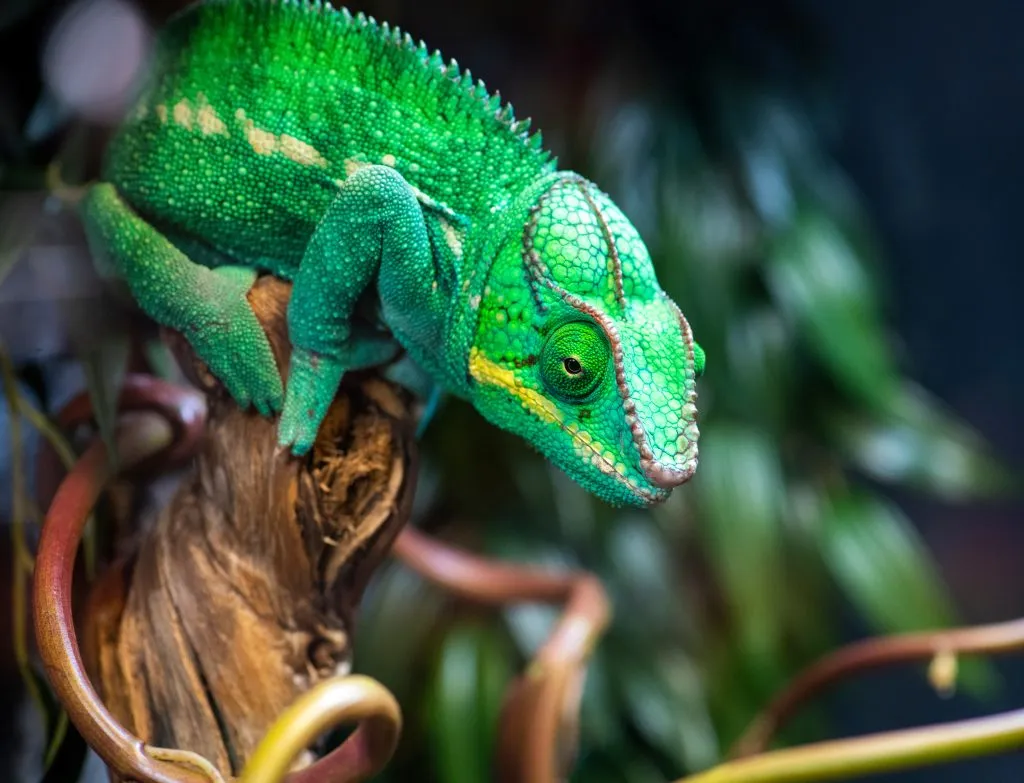
Have you peeked in your chameleon’s cage and noticed something strange about its movement? A common problem that chameleon owners see from time to time is that they might not be using their back legs. Unfortunately, this is often a bad sign that something larger is going on.
When a chameleon stops using its back legs, it can be caused by serious health issues such as metabolic bone disease, poor diet, or impaction. Their
In this article, we explain in detail why your chameleon is not able to use its back legs anymore and what you should do right now to help.
Table of Contents
Common Reasons For Paralyzed Back Legs In Chameleons
So let’s have a look at the possible reasons in detail:
Metabolic Bone Disease
Perhaps the biggest reason why your chameleon may no longer be using its back legs is because it’s struggling with metabolic bone disease (MBD).
If your chameleon doesn’t get enough vitamin D3, UVB light, or calcium in their diet, they might develop this painful condition.
When these elements of a well-balanced diet are lacking, the chameleon won’t be able to absorb the calcium, weakening their bones. As a result, you will frequently see it accompanied by other symptoms associated with this weakness:
- Bent limbs
- Lethargy or sleeping a lot
- Inability to close its mouth
- Lack of appetite
- Broken bones
- Warped spine
As MBD progresses, you might notice that your chameleon has a much harder time when it comes to bearing weight on those hind legs.

At this point, there may not be much you can do to reverse the effects of metabolic bone disease. However, if you can catch it early, you might be able to keep your chameleon healthy for another few years at the very least.
Metabolic bone disease can be prevented with a proper diet filled with calcium and gut-loaded insects and UVB light for 12 hours a day.
Impaction
After metabolic bone disease, perhaps the most common cause for a refusal to use the hind legs is impaction.
Impaction is most often caused by consuming the substrate of their cage, which can then turn into a blockage in the large intestine.
In addition to not using the back legs, other signs of impaction include:
- No bowel movements for four days or more
- Constipation with no results
- Swollen abdomen
- Lack of appetite
Your chameleon may be able to pass its impaction on its own if you ensure that the conditions in their enclosure are right.
Take away their substrate to prevent the impaction from worsening, keep their temperatures high, and give them access to plenty of water droplets.
However, veterinary attention might be necessary if it has been longer than a week without stool.
Feeding Insects that are Too Large

Closely related to impaction is your reptile’s overall diet. As your chameleon grows, he might be able to tolerate larger insects. However, you need to be cautious when it comes to increasing the size of the insects too quickly.
What happens if they eat crickets, worms, or flies that are too large for them?
The overall size of the insects could cause their stomach to become fuller than usual. As their entire body is relatively compact, this leads to other physical problems.
For example, the stomach could press on nerves along the spine that limit hind leg movement.
As a rule of thumb, keep insects to a size that is as long as the width of your chameleon’s head.
Falls and Pinched Nerves
Your chameleon loves to climb on the vines and branches in its enclosure. For the most part, they will only fall in their enclosure if a branch breaks or if they tried to climb the glass.
They are more likely to fall when you take them out of the enclosure if they try to climb a surface too smooth for them to grasp.
If you notice that they are having a hard time moving their back legs after a fall, it could be the result of a pinched nerve. It’s a good idea to remove items they can climb and to give them a flat surface to lay on while they heal.
This might also be a good time to take them to the vet for an MRI or a CT scan to rule out any issues that could linger.

They may need surgery or medication to get them back to a healthy state. Always choose a veterinarian that is well-versed in reptile husbandry.
Tip: If your chameleon fell from a high place, read our article on that here. It will show you what you should do now.
Final Thoughts
If you find that your chameleon is no longer using its back legs, you need to do a little detective work to figure out why not.
It’s always better to be on the safe side and take your chameleon to the veterinarian if you suspect that they might have metabolic bone disease, impaction, or a pinched nerve.
- Enchi Ball Python: A Unique and Stunning Morph of Python regius - March 27, 2025
- Emerald Tree Monitor: The Enigmatic Green Guardian of the Rainforest - March 26, 2025
- The Egyptian Cobra (Naja haje): A Fascinating Serpent - March 25, 2025
